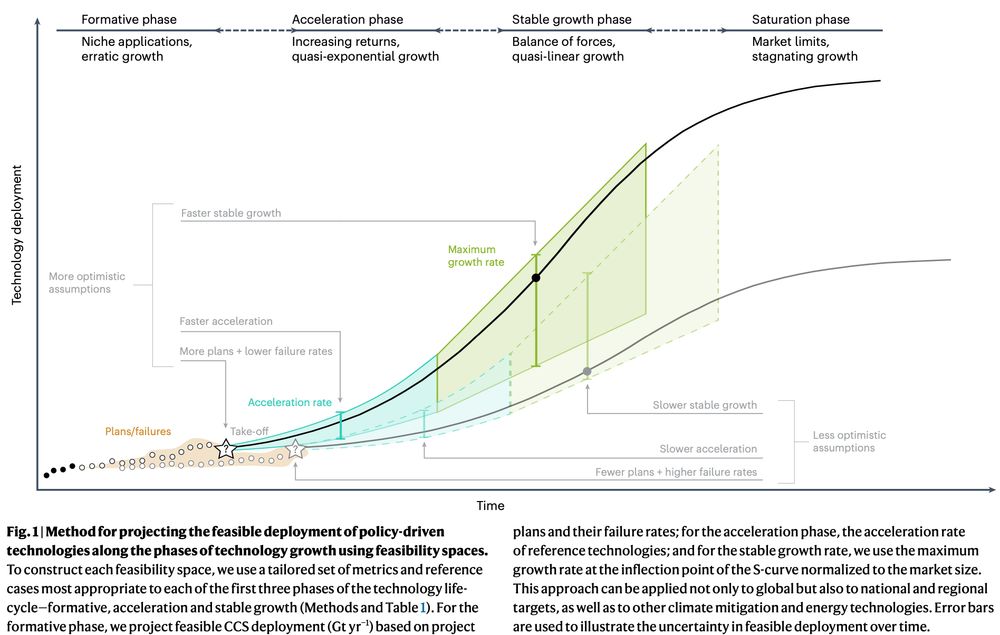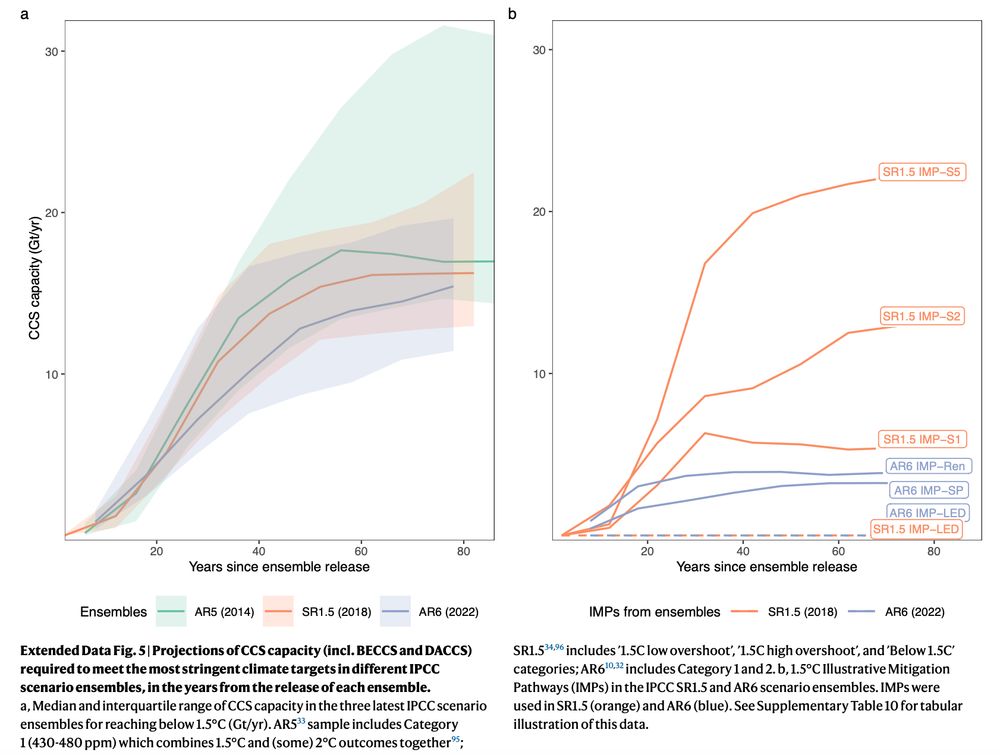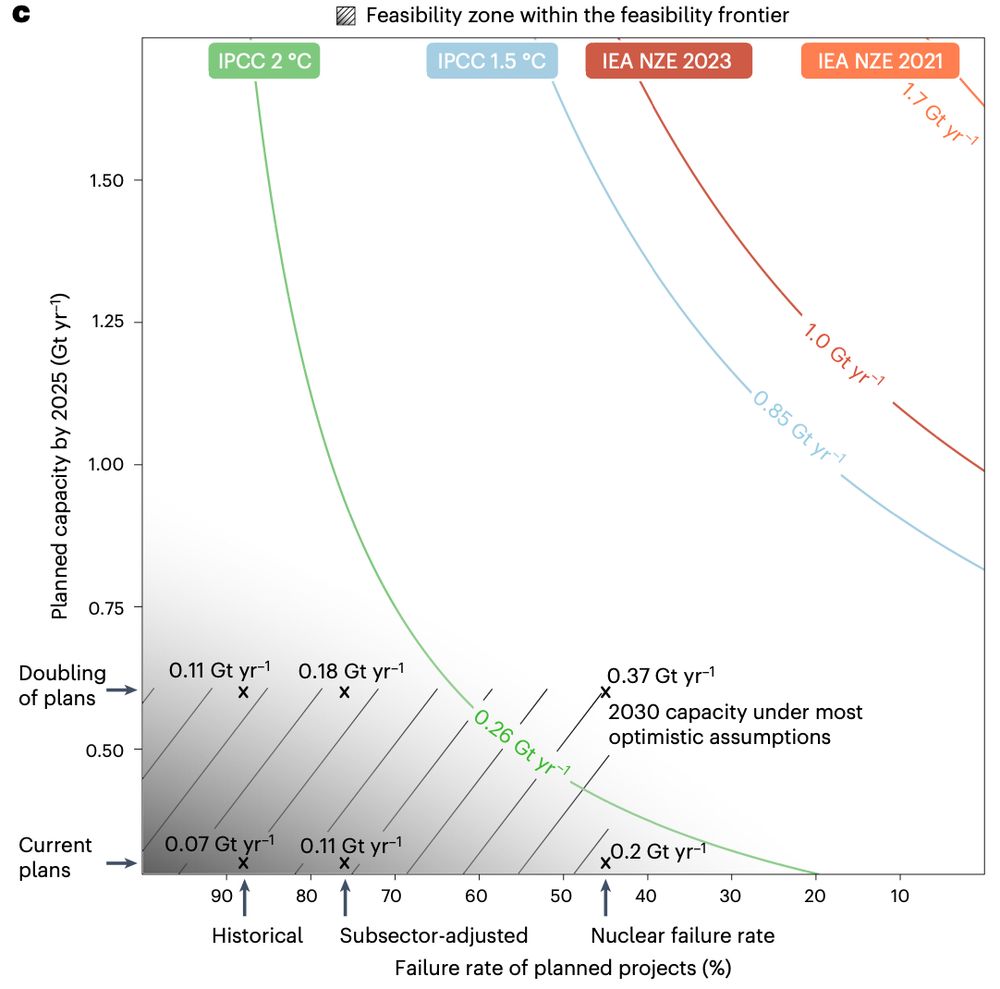
Jessica Jewell
@jdjewell.bsky.social
Finding feasible solutions to climate change. Enamoured of science.
Sorry what’s the difference between the left and right panels?
December 9, 2024 at 3:04 PM
Sorry what’s the difference between the left and right panels?
Huge thanks to ERC research and MISTRA Foundation for funding this work!
November 19, 2024 at 2:52 PM
Huge thanks to ERC research and MISTRA Foundation for funding this work!
Applying our method beyond global analysis, we show that both EU Net-Zero Industry target (2030) and EU Industrial Carbon Management Strategy ambition (2040) are 2°C-compatible yet close to the feasibility limits, requiring expansion similar to EU onshore wind in the 2000’s.

November 19, 2024 at 2:52 PM
Applying our method beyond global analysis, we show that both EU Net-Zero Industry target (2030) and EU Industrial Carbon Management Strategy ambition (2040) are 2°C-compatible yet close to the feasibility limits, requiring expansion similar to EU onshore wind in the 2000’s.
Our method for projecting feasible growth of new technologies relies on an inventory of plans & assessment of failure rates, realistic expansion for the acceleration phase, and annual growth for the stable growth phase. Would work well for other new technologies like #hydrogen!

November 19, 2024 at 2:52 PM
Our method for projecting feasible growth of new technologies relies on an inventory of plans & assessment of failure rates, realistic expansion for the acceleration phase, and annual growth for the stable growth phase. Would work well for other new technologies like #hydrogen!
The reliance on CCS technologies in Paris-compatible climate pathways has been gradually declining, but the 1.5°C pathways still require CCS to be upscaled unrealistically fast.

November 19, 2024 at 2:52 PM
The reliance on CCS technologies in Paris-compatible climate pathways has been gradually declining, but the 1.5°C pathways still require CCS to be upscaled unrealistically fast.
Even if in 2030-2040 CCS achieves 10-fold expansion; and after 2040 keeps adding annual capacity as fast as nuclear power did in the 1980’s, it would only be in-line with 14% of 2°C pathways that store up to 600 GtCO2 by 2100. The entire AR6 ensemble foresees up to 2000 GtCO2.

November 19, 2024 at 2:52 PM
Even if in 2030-2040 CCS achieves 10-fold expansion; and after 2040 keeps adding annual capacity as fast as nuclear power did in the 1980’s, it would only be in-line with 14% of 2°C pathways that store up to 600 GtCO2 by 2100. The entire AR6 ensemble foresees up to 2000 GtCO2.
To assess feasible deployment, we assume that CCS uptake accelerates in 2030-2040 and then continues to grow at peak speed. Fastest acceleration was achieved by solar (10-fold in 2012-2022), while nuclear power had maximum annual additions (1.4% of global electricity in 1984).
November 19, 2024 at 2:52 PM
To assess feasible deployment, we assume that CCS uptake accelerates in 2030-2040 and then continues to grow at peak speed. Fastest acceleration was achieved by solar (10-fold in 2012-2022), while nuclear power had maximum annual additions (1.4% of global electricity in 1984).
After extensive policy and technology learning, technologies tend to ‘take off’ and enter the acceleration phase before growth stabilises and eventually saturates. Success of early projects can lead to CCS ‘take off’ by 2030, but what is the feasible maximum growth post-2030?

November 19, 2024 at 2:52 PM
After extensive policy and technology learning, technologies tend to ‘take off’ and enter the acceleration phase before growth stabilises and eventually saturates. Success of early projects can lead to CCS ‘take off’ by 2030, but what is the feasible maximum growth post-2030?
We show that in order to deploy CCS as fast as required in 2°C-compatible scenarios, the number of CCS plans should approximately double in 2022-2025 and the failure rate should drop to 45–60%.

November 19, 2024 at 2:52 PM
We show that in order to deploy CCS as fast as required in 2°C-compatible scenarios, the number of CCS plans should approximately double in 2022-2025 and the failure rate should drop to 45–60%.
Massive use of CCS (carbon capture and storage) is necessary to limit global warming to < 2.5°C and rapid near-term growth is required for 1.5°C and 2°C targets. The current plans are to increase CO2 use eight-fold by 2030, but in the past almost 90% of such plans failed.

November 19, 2024 at 2:52 PM
Massive use of CCS (carbon capture and storage) is necessary to limit global warming to < 2.5°C and rapid near-term growth is required for 1.5°C and 2°C targets. The current plans are to increase CO2 use eight-fold by 2030, but in the past almost 90% of such plans failed.

